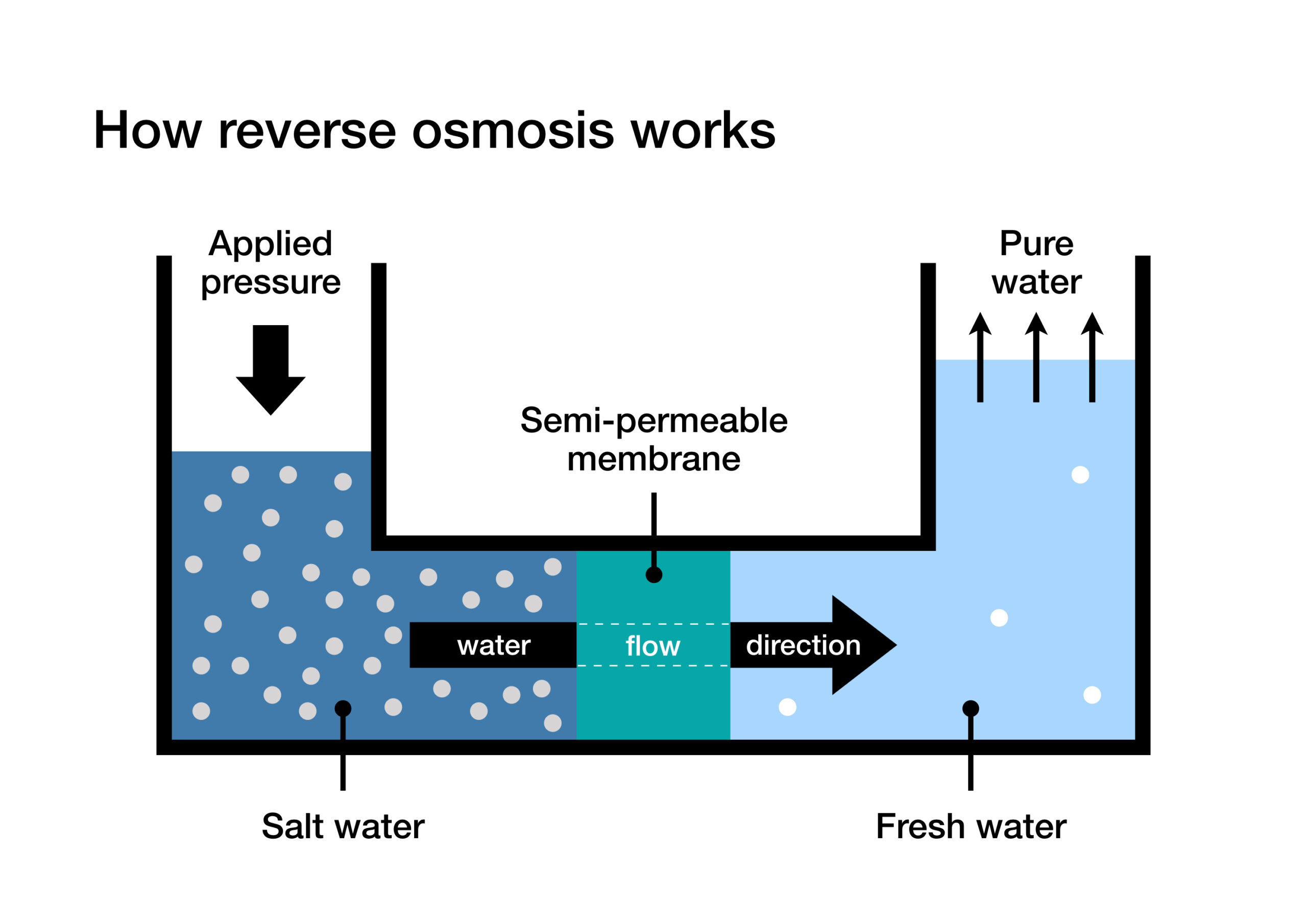Desalination
The commitment to halt the melting of glaciers and the resulting rise in sea levels is growing daily, as is the effort to reduce greenhouse gases in the atmosphere. Despite consistent efforts to safeguard our planet, we must address some significant crises, such as the shortage of fresh water.
Fresh water makes up for approximately 2.5% of the total water on the planet. Of this fraction, most is contained in glaciers and snowfields, leading us to conclude that only about 0.007% of the Earth’s water is accessible to the global population. Given that sea water exists in enormous quantities, the use of desalination plants is becoming increasingly common.
Desalination is a process that reduces or completely removes salts from seawater or brackish water, making it suitable for drinking or for agricultural, or industrial purposes.
In theory, a desalination plant can be used in any area where there is a need for fresh water but only salt water is available.
Currently, seawater desalination is routinely employed in 183 countries worldwide; half of the global desalination plants are located in the Middle East. In Europe, the country with the most desalination plants is Spain, which had around 765 in 2021. Saudi Arabia, on the other hand, obtains about 50% of its drinking water from desalination plants.

The types of desalination plants
There are various types of desalination plants, depending on the technology used. Here are the three main types:
• Reverse osmosis desalination plant: this system produces fresh water by separating salt water into two streams, using a semi-permeable membrane. The key to the process is the pressure differential: salt water is pumped at high pressure against this membrane, which allows water to pass through but blocks most salts and impurities. The high pressure forces the salt water through the membrane, thereby separating it from the salts, thus producing fresh water.
• Evaporation desalination plant: in this case, the process is relatively straightforward. The water is heated to make it evaporate; while the salt remains at the bottom, the vapor is condensed, turning into fresh and clean water.
• Ion exchange desalination plant: this process is quite complex and relies on the removal of ions through the use of special resins.
Approximately 85% of installed desalination plants worldwide use reverse osmosis technology. This is because, compared to the evaporation process, reverse osmosis desalination requires significantly less energy, as it does not involve the use of heat sources.

Advantages and disadvantages of desalinating seawater
The advantages of using desalinated water are numerous; let’s examine them in detail:
1. Reliable source of drinking water: one of the primary advantages of desalination is that it provides a consistent and reliable source of drinking water. Unlike traditional water resources such as rivers or groundwater, which can run dry, seawater is pratically inexhaustible.
2. Reduction in dependence on inland water sources: many regions around the world, especially those that are arid, rely heavily on limited inland water sources. Desalination enables these areas to diversify their water supply sources, reducing the pressure on internal resources.
3. Water quality: when properly managed, the desalination process can produce high-quality water, often superior to that obtained from other sources. This is particularly advantageous in areas where traditional water resources may be contaminated.
4. Economic and social development: the availability of potable water is essential for socio-economic development. Communities can thrive, agriculture can expand, and industries can operate efficiently when they have access to reliable water resources.
5. Evolving technology: with technological advancements, the costs associated with desalination have decreased over time, making the process more accessible to a growing number of communities.
Among the various advantages, there’s also a notably significant opportunity to highlight: the synergy between desalination and renewable energy sources.
By integrating desalination plants with these renewable sources, we not only make the process of producing potable water more sustainable, but we also begin to outline a model for a future in which clean energy powers our basic needs.
One disadvantage is the brine, which is the waste product from reverse osmosis desalination plants: for every liter of desalinated water, 1.5 liters of liquid contaminated with copper and chlorine are created. This waste must be properly diluted to ensure that it does not harm marine ecosystems.

